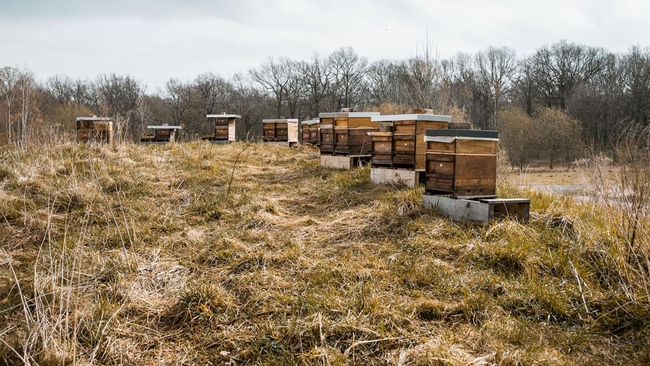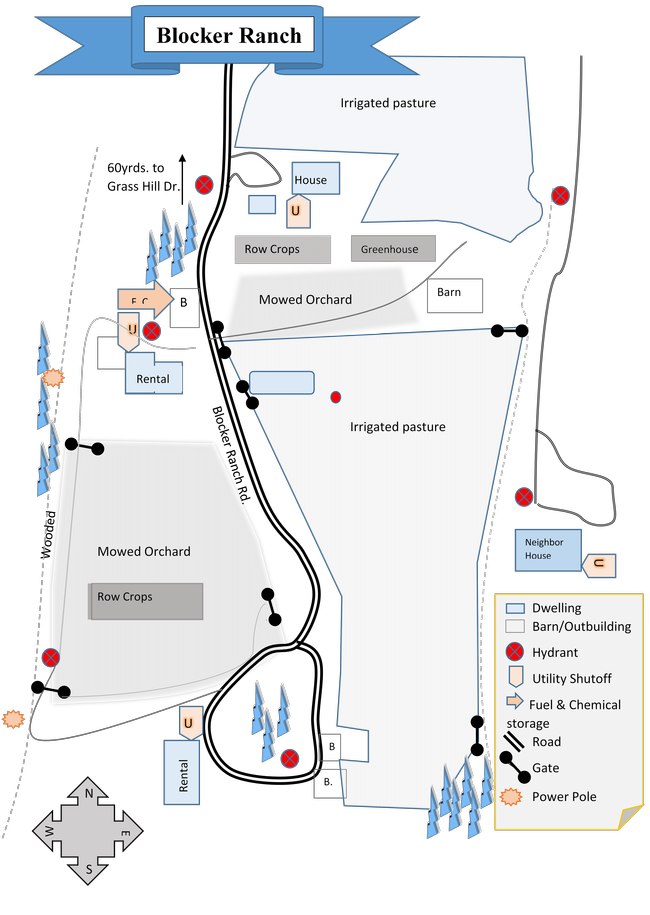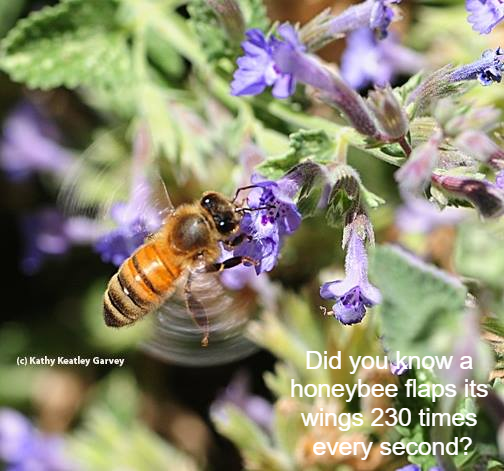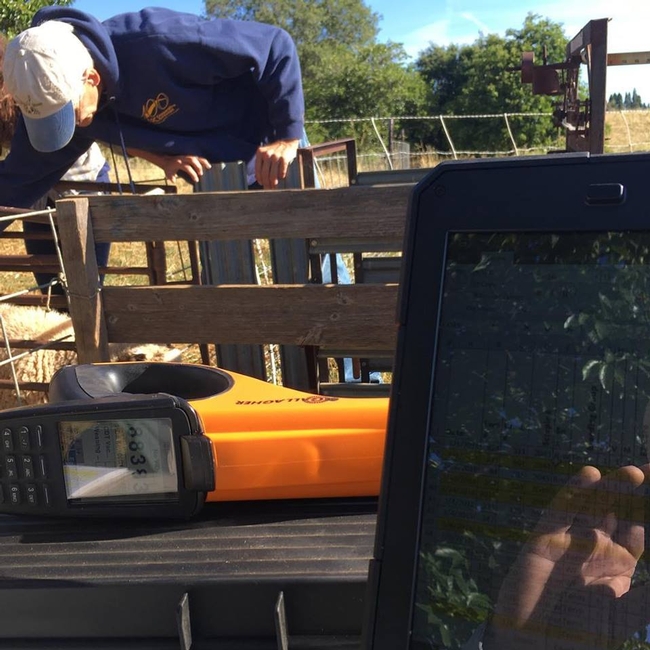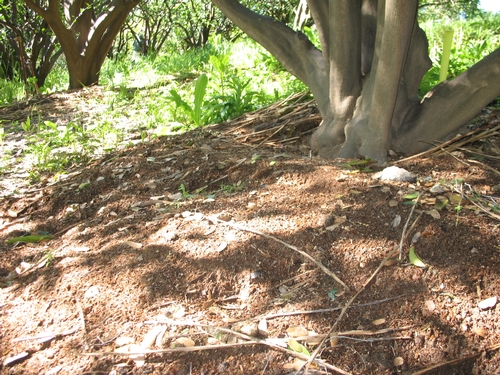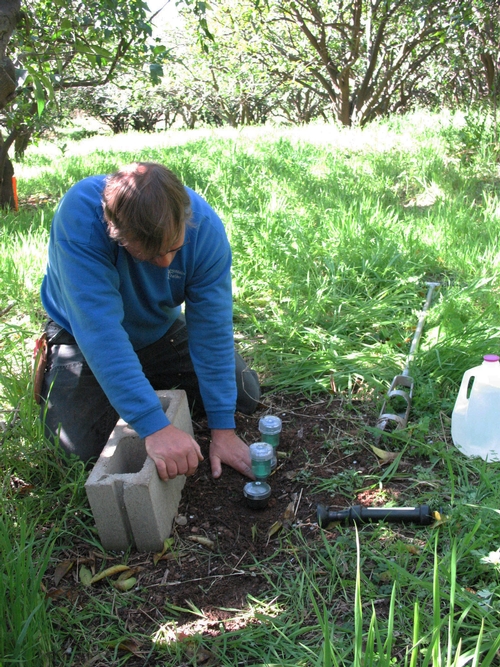Foothill Farming Blog
Support Your Local Bee Keepers: how you can do your part
The humming sound of busy honeybees filled the fall air, darting back and forth as I followed long-time beekeeper Randy Oliver around his bee yard. I was there to learn about a new issue for local beekeepers. Oliver explained that local honeybee colonies have been robbed of their honey in places they have been kept year-after-year for several decades. Robbed?? Yes, by other honeybees, from hives from other parts of California. In the last couple years, numerous out-of-area hives have been placed in close proximity to local hives. Oliver, along with local beekeepers, presented a draft proposal to the Nevada County Ag Advisory Commission, which recommended an emergency beekeeping ordinance to county supervisors.
Oliver explained that the proposal calls for a minimum of a 2-mile radius around each existing apiary location and a 45-hive maximum in each location. All bee hives in Nevada County must be registered by the Ag Commissioner in January each year. This ordinance is designed to provide the resources and “teeth” to protect local bees and their food sources. Put in rancher terms, imagine that you had your cattle on pasture, someone saw your cattle grazing and decided to dump off 100 cows in the same pasture because it looked like a good food source. “This is beekeepers regulating themselves” said Oliver. The ordinance would not cost taxpayers and is funded by beekeepers themselves. Hobby beekeepers would be exempt from the registration fees and existing hives would be grandfathered in. Another issue with having bee colonies in close proximity is the potential for infection and mite drift into hives. Oliver explained the dangers of reintroducing a bacterial disease called American foulbrood that is nearly eradicated in Nevada County. This issue may also be of concern in Placer County.
So what does this have to do with local farmers and ranchers? If someone asks permission to put honeybee hives on your land, or leaves a note on your gate, contact your Nevada County Beekeepers Association or search “Honey” on the Placer Grown website to find local beekeepers.
A report released in March by the National Agricultural Statistics Service (NASS) stated that California produced 13,735,000 pounds of honey in 2017, worth more than $28.5 million dollars. Beekeeping is an important agricultural activity in this area. Hive rentals to almond growers rather than honey provide the major income for beekeepers, but honey is an important product in the foothills.
Learn more:
Why are honey bees important to crops and farmers? – Bees Matter
https://www.beesmatter.ca/why-are-honey-bees-important-to-crops-and-farmers/
Learn How to be a Bee-Friendly Farm - http://pollinator.org/bff
Cattle, Honey Bees Graze in Harmony on Wisconsin Farm - Find out how NRCS can help you increase pollinators on your farm or ranch. https://www.nrcs.usda.gov/wps/portal/nrcs/detail/national/home/?cid=NRCSEPRD405218
Nevada County Bee Keepers Association – http://nevadacountybeekeepers.org/
Placer Grown - http://www.placergrown.org/
Randy Oliver - http://scientificbeekeeping.com/
Farm Preparation for Wildfire and Other Emergencies
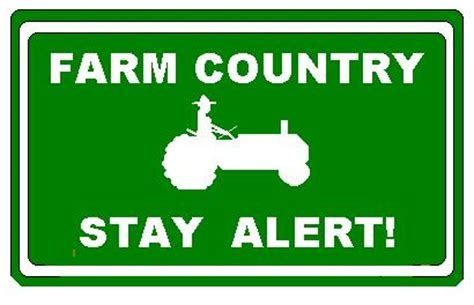
According to many state fire officials, we no longer have simply a ‘Fire Season' but a ‘Fire Year'. In winter drought conditions, some parts of our region do not receive enough rain to mitigate fire danger. It is more important than ever to constantly assess your farm for fire safety and be prepared for any emergency.
The following information will assist you in thinking through four important areas of disaster preparedness for your farm: Paperwork & Plans, Farm Map & Layout, Tools & Machinery, and Operations & Training.
Paperwork & Plans:
- Conduct a fire risk assessment and record your findings. Assess brush clearance, road access, evacuation routes, defensible space, topography (fire climbs hills quickly), and water sources. If needed, make a plan to address any critical issues.
- Evaluate current insurance coverage to ensure adequate coverage for farm assets. Consider livestock, crops, buildings, and equipment.
- Keep up-to-date production, marketing, and financial records. Check the Foothill Farming website resources on risk management and business planning tools for templates. Scan or store them on a USB flash drive or external hard drive.
- Make a farm communication plan. What happens if you are not home during a disaster situation? Do you have phone numbers and good relationships with neighbors? Are the phone numbers written down for your family members and employees as well?
- Create a farm emergency plan, use the following free online templates or use them as a guide to create one more suitable for your own farm.
- http://ucanr.edu/sites/placernevadasmallfarms/files/289237.pdf
- https://www.formsbank.com/template/325465/emergency-plan-for-farm-template.html?page=5
- http://www.maeap.org/uploads/files/EMERGENCY_PLANNING_fillable_Form_E2575-ET_AA.pdf
- http://www.ncagr.gov/disaster/Farm-Emergency-Plan-Template.pdf
Developing a farm emergency plan before a disaster can help you respond more rapidly and objectively.
Farm Map & Layout:
- A farm map should be part of your emergency plan. Create a map including symbols and a key for the following:
- Homes, barns, and outbuildings.
- Utility shutoffs.
- Power and utility lines.
- Fuel and chemical storage.
- Roads and bridges (including weight limitations).
- Water sources and delivery systems.
- Gates (including combinations).
- Fuel breaks.
- Any other possible farm hazards.
You may include brief general guidance for emergency responders on the map as well.
- A well-maintained and accessible water source is critical. If possible, consider a water source for fire trucks. An accessible source includes:
- Defensible space.
- Gravel road access within 12 feet of water source.
- Minimum 45-foot radius turnaround close by.
- Post permanent signs indicating water source location.
- For more detailed information about what is needed at a water source, check out this information from Oregon State Extension https://catalog.extension.oregonstate.edu/sites/catalog/files/project/supplemental/pnw618/pnw618-chapter6.pdf
- Farm design should incorporate these principles, especially around structures. Create at least 100 feet of defensible space by:
- Removing flammable objects from around barns or dwellings (e.g. flammable vegetation, feed bags, cardboard boxes, plant debris, fuel, etc.).
- Breaking up fuel continuity by separating plants from each other in gardens and landscape design.
- Taking care in selecting, locating, and maintaining trees.
- Post a clearly visible sign with property name and number at the entrance.
Tools & Machinery:
- Carry fire extinguishers and fire tools, especially in off-road vehicles. (e.g. trucks and tractors), CalFire requires a 5-gallon water supply and a fire tool be carried in wildland settings – consider adding this equipment to your tool box!
- Conduct frequent inspections of farm machinery for debris removal. Pay attention to hazards associated with exhaust systems and catalytic converters.
- All farms should have proper personal firefighting equipment such as shovels, hoes, and fire extinguishers that all farm employees can carry.
- Use rodent deterrents as they can chew through electrical insulation.
- Limit or postpone machinery use on high fire danger days. If use is unavoidable, plan for competing tasks before 10:00 AM.
- Stay 30 minutes after machinery use is shut off to monitor fire risk.
- More tips on preventing farm equipment fires, http://www.redrivermutual.com/wp/wp-content/uploads/Preventing-Farm-Equipment-Fires4.pdf
Operations & Training:
- Conduct an annual fire plan and equipment “refresher” for all farm personnel. Consider labeling safety equipment and fire tools on your map, with signs for your employees and family. Train folks on how to use this equipment.
- Have a routine for “red flag days” such as delaying mowing or machinery use.
- Although California law requires all electric fences to have low-impedance chargers, check frequently to ensure wires are free of materials that may cause the fence to arc. Always operate according to manufacturer directions.
- Restrict or clearly designate smoking areas.
- Include fire danger mitigation and forest management in annual planning.
Fire prevention should be a year-round activity in our fire-prone region. Be sure to consider the needs of both family and farm personnel in any emergency situation. Proper planning now will help mitigate the inevitable stress involved in farm emergencies. We would love to hear your thoughts, plans, and ideas related to disaster preparedness. Please feel free to comment below.
National Honey Bee Day: August 18, 2018
National Honey Bee Day - Aug. 18, 2018: Brush up on your knowledge of bee protection
Author: Stephanie Parreira
Celebrate National Honey Bee Day by brushing up on your knowledge of bee protection—check out the newly revised Best Management Practices to Protect Bees from Pesticides and Bee Precaution Pesticide Ratings from UC IPM. These resources will help you strike the right balance between applying pesticides to protect crops and reducing the risk of harming our most important pollinators.
The best management practices now contain important information regarding the use of adjuvants and tank mixes, preventing the movement of pesticide-contaminated dust, and adjusting chemigation practices to reduce bee exposure to pesticide-contaminated water. The Bee Precaution Pesticide Ratings have also been updated to include ratings for 38 new pesticides, including insecticides (baits, mixtures, and biological active ingredients), molluscicides (for snail and slug control), and fungicides.
Most tree and row crops are finished blooming by now, but it is a good idea to learn about bee protection year-round. Visit these resources today to choose pesticides that are least toxic to bees and learn how you can help prevent bees from being harmed by pesticide applications.
Working on the Business
Earlier this month, I had the opportunity to attend the Sheep Industry Innovators Conference organized by lamb processor Superior Farms at UC Davis. The conference brought together sheep producers from throughout the U.S. - both large and small. While much of the conference was focused on technology, one of the early speakers talked about business innovation and disruption - topics that apply to all types of farms and ranches!
If you're an alumnus of our Farm Business Planning Short Course, you'll be familiar with the acronyms WOTB and WITB (coined by the Ranching for Profit school). Most of us who farm or ranch prefer WITB - Working in the Business. These are tasks like transplanting tomatoes, moving sheep, or pruning apple trees. WITB, for most of us, is the kind of work that drew us to farming or ranching in the first place. WOTB - Working on the Business - often seems dull by comparison. WOTB includes activities like business planning, developing new markets, or succession planning. WOTB often involves sitting at our computers or (heaven forbid) talking to our partners or families about the farm or ranch.
Despite my dislike of WOTB work, I find that working on the business is crucial to my ranch business' success. Intentionally carving out time each month for WOTB work helps make sure I don't neglect this important work. One of the speakers at the Sheep Industry Innovators Conference offered a new insight to one of the most critical pieces of WOTB work - updating our business plans.
Steve Elliott, Global Minerals Manager for a firm called Alltech, suggested that all businesses (not just farms and ranchers, but perhaps most importantly so) should ask four questions on an annual basis:
- Where are we now?
- Where have we come from?
- Where do we want to go?
- How will we get there?
For me, these questions offer a simple, well-structured approach to evaluating our businesses. They help place questions about new production systems, marketing strategies, and capital purchases in the context of our long-term business goals. We'll be using these questions this fall when we analyze our own sheep ranching enterprise.
Mr. Elliott also talked about the difference between innovation and disruption - high-tech terms that I had never thought much about in a small-farm context. Innovation, he said, is doing something new that improves on the old way of doing things. Disruption, on the other hand, is doing something new that makes the old way obsolete. I'm still thinking on this concept - what are the new approaches or new technologies that will disrupt your approach to farming or ranching?
Finally, Mr. Elliott suggested that our creativity is improved when we slow down. I know that for me, a quiet walk is good for my body and my mind. I often think more clearly about difficult problems when I'm away from my desk. This fall, when we focus on our WOTB work for our sheep operation, I'm going to suggest that we take a walk - I suspect we'll be more creative without the distractions of emails, cell phones, or even sheep work!
My point to all of this is to remind us all about the importance of stepping back and working on (rather than in) our businesses. I raise sheep because I love the day-to-day work. I'll only get to continue raising sheep if I pay attention to the needs of my business.
Citrus Research in the Foothills: What we have learned so far
Growing mandarins in the foothills often produces a tantalizing crop of fruit that delights even the pickiest of connoisseurs, however, it is not produced without difficulty. UCCE Placer/Nevada has collaborated with five local citrus growers to research the effects of pruning to thin canopy and mulching to conserve soil moisture and create a healthier root zone. To learn more about this project, read Citrus Grower Bob Bonk's blog post, Mandarin Growers Test New Practices on the Foothill Farming blog. Research began just over a year ago and here are some of the things we have learned so far.
Mulching:
Mulch under citrus trees helps maintain soil moisture, reduces soil temperatures, and can effectively manage weed growth.
Methods: Mulch is best applied when the soil is saturated. Typically mulch is applied in March/April in this region but can be applied later if soil is irrigated to saturation level. Mulching is most effective for weed suppression when either little to no weed emergence has occurred, weed whacking, or herbicide spray is implemented first. Mulch alone reduces weed growth. Mulch applied over builder's paper or 6-8 sheets of newspaper then saturated to conform to the ground is even more effective. Fertilizer is best applied before mulching.
Materials: A 50/50 wood chip and horse manure blend is used in the research trials but either one can be used on its own. Composted manure alone decomposes rapidly, a mix of manure with wood chips will last longer. Wood chips last longer than either the wood chip/manure mix or manure alone but will provide little to no nutrient value to the tree.
Irrigation:
We have observed that often irrigation with overhead sprinklers does not penetrate dense tree canopies and may lead to water stress. Tensiometers, which measure soil moisture, were installed in citrus orchards in summer 2017. They showed that overhead irrigation water was not reaching the ground under dense canopies, causing water stress in hot weather. As a result of some of this research, several commercial citrus growers have modified irrigation practices or are changing irrigation systems to mitigate water stress.
Looking to the future:
Soil temperature can affect root activity so beginning this year soil temperature are also being monitored throughout the research project. Citrus growers are attending workshops, field meetings, and learning what the orchard trials are teaching us. Many are implementing new methods and practices in their citrus operations. Citrus trials will continue at least through 2019. Look for more information in future blogs.
Commercial growers are invited to participate in a Composting & Mulching Workshop on Thursday, May 31st, 9 AM to 12 noon, register at this link. http://ucanr.edu/survey/survey.cfm?surveynumber=24853


